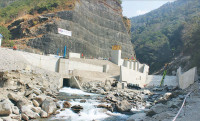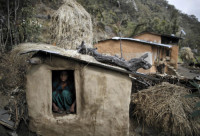Letters
A change of course
Rivers are often the subject of disputes between countries and can arouse nationalism—this can be good, but anger can also be misguided when the science of how rivers work is not well understood.
Rivers are often the subject of disputes between countries and can arouse nationalism—this can be good, but anger can also be misguided when the science of how rivers work is not well understood. In Nepal, river disputes have mostly been with India (e.g. around agreements on the Koshi, Gandaki, and Mahakali), but, as this story shows, disputes with China can also occur (‘Chinese construction along Nepal-Tibet border puts strategic land at risk’, TKP Online, January 14th, 2019).
A few parts of this story seem to need more clarity.Looking at the area on Google Earth (satellite image from this year, 2019), it seems that the vast majority of the village of Kimathanka is about half a kilometer away from the river. Most of the existing buildings (with a few exceptions) do not appear to be at risk from river erosion—contrary to what the article states.
That said, there is an area of (mostly empty) flat land near the river, which presumably is where Nepal would like to build border infrastructure. On the far side of the river is China, where the Chinese have built an embankment that the article states is causing erosion on the Nepal side. It is true that building an embankment on the left side of the river can cause it to shift right (or vice versa), but it is also true that rivers often shift naturally, on their own.
Some questions I am left with: did the area that Nepal desires to build infrastructure flood regularly before the Chinese embankment? If so, is it a good place to build a customs house, etc? Can the flooding be controlled over the long term with an embankment?
Embankments, unfortunately, are often only a short-term solution and don’t obviate the need to avoid building on floodplains, as my colleague Bhola Paswan and I have written in an in-depth series about the embankments on the Koshi; see here:A dammed history of the Koshi. It’s good that the authors reached out to the Chinese side for their view, but unfortunate that they were not able to include their views.
Peter Gill, Kathmandu




 27.83°C Kathmandu
27.83°C Kathmandu







